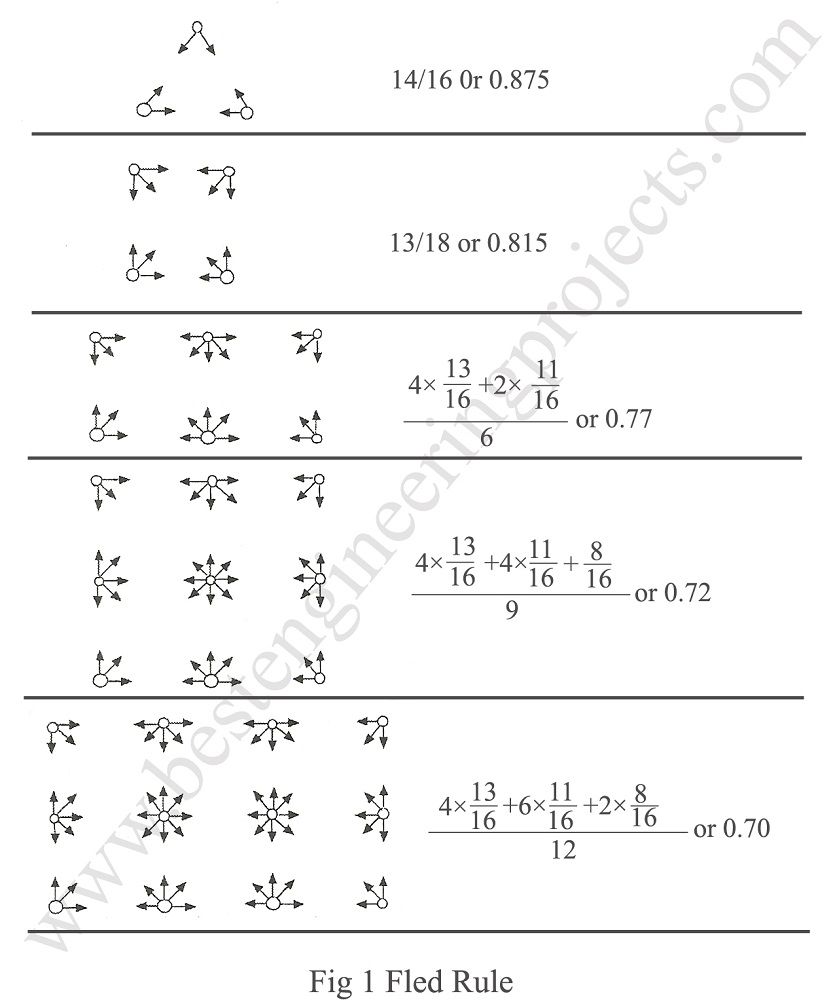The spacing of the piles is usually predetermined by practical and economical considerations. The design of a pile foundation is usually comprises:
- Determination of the ultimate load bearing capacity of the group Qu(g)
- Determination of settlement of the group s(g)
It is well known that the ultimate load of the group is generally different from the sum of the ultimate loads of individual piles Qu(s).
——— (1)
Where, Ef = Group efficiency ratio
Qu(g) = Ultimate bearing capacity of the pile group
Qu(s) = Ultimate bearing capacity of single pile
The group efficiency depends on the type of soil, method of installation, spacing, load per pile and numbers of pile in the group.
There is no acceptable “efficiency formula” for group bearing capacity. There are few formulas such as FLED rule, Converse Labare Formula that are sometimes used by engineers. These formulas are empirical and give efficiency less than unity. But when piles are installed in sands efficiency factor can be greater than unity as shown by Vesic. There is not much experimental evidence to determine the group efficiency for piles embedded in clay soils.
There are many pile group efficiency equations. These equations are to be used cautiously. In many cases, they are no better than a good guess. The Converse Labare Formula is one of the most widely used formula and is expressed as:
———- (2)
Where, m = number of rows in a group
n = number of piles in a rows
d = diameter of the piles
s = spacing of the piles
As per Tomlinson, when spacing of piles in a group is twice the pile diameter, the efficiency is about 0.7. When it is increased to 8 diameters, the efficiency reaches to unity. Thus we can write,
———- (3)
Where, is the efficiency of the group and n is the number of piles in the group.
FLED’S RULE – As per the rule recommended by Fled the capacity of pile is decreased by 1/16 for each adjacent pile.
The computation of efficiency for various pile groups is shown in Fig.1 above.
